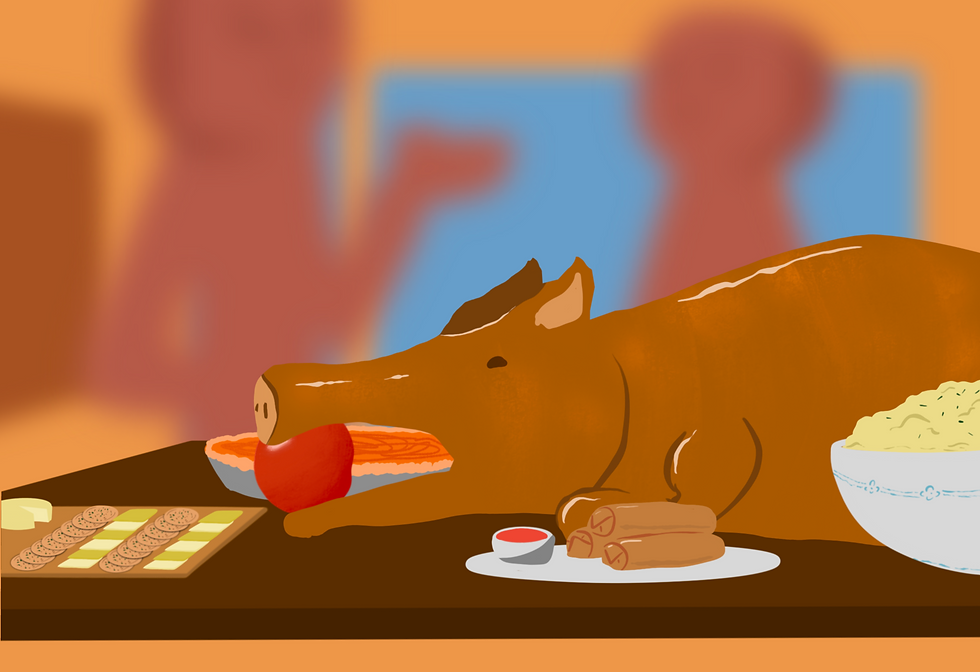How do Eagle Rock students celebrate the holidays?
- Shiogo Allen

- Jan 20, 2024
- 2 min read

With the holidays and winter season behind us, it is interesting to see how different groups of people and cultures can celebrate events that so many do across the world and country. Even if they celebrate the same holiday, things can be done vastly differently between families and cultures.
Filipinos traditionally begin celebrating Christmas on the very first day of September, lasting until the beginning of January. With this comes the task of Christmas decorations, such as putting up lights or the parol, a Filipino ornamental lantern. Furthermore, Filipino food will generally be eaten instead of eating a traditional Christmas meal. “We eat a lot of traditional dishes like pancit [and] lumpia,” said Rebekah de Guzman, a sophomore at ERHS. Despite its differences, a Filipino Christmas can still mean very similar things to those who celebrate it. “I’ve always associated Christmas time with togetherness and family because it’s particularly special to me because it’s the only time that I can like, see my family in the Philippines.”
Image credit Meron Worku
Ethiopian Christmas, unlike others, traditionally falls midway through January, when a large group celebration is held. “Normally, there’s a big gathering. It doesn’t have to be just with family,” described Meron Worku, a senior. “And it’s just like, sort of everyone just gathers together and people, they sell food. They sell clothes and everyone’s in traditional clothing.” Food during Ethiopian Christmas is mostly based around injura, a soft sort of bread that different stews, meats, and vegetables are then added to. Meron’s family also does a traditional gift-giving event similar to that of Secret Santa; they exchange little Ethiopian trinkets such as a small wooden instrument or Ethiopian money. Ethiopian Christmas and culture are both very important to Meron. “I think it’s just like a very important thing to be able to celebrate like, or celebrate and acknowledge your culture [and] to be able to explore [it] in different ways.”
Image credit Sumiye Allen
Mochitsuki is a Japanese traditional event involving the making of mochi, a traditional Japanese rice cake, to be eaten on New Year’s. While mochi is traditionally made by pounding a special rice (called mochigome) with large wooden mallets, this can be very dangerous and requires a lot of skill, so machines are often utilized to automate the rice-pounding process. “It comes out [of the machine] in this big lump and you have to cut it up and shape it into the actual round shapes,” said Sumiye Allen, a senior. Regular mochi, Ozoni (a type of New Year's mochi soup), and okasane (two large flat mochi stacked on top of each other and topped with an orange to be put on the family altar) are all made and signify good luck for the year to come. In addition to mochi, a Japanese New Year’s celebration involves lots of traditional Japanese food. Sumi says her family eats sushi, sashimi, soba, nishime (a vegetable stew), tsukemono (a vinegary cucumber salad), and more. For Sumi, Mochitsuki and New Year’s is all about family: “It’s a family tradition, we’ve been doing it every year; I get to see my cousins and other family friends.”
While traditional American and European holidays are celebrated across the country, it’s important to look back and understand that so many other cultures share and celebrate these traditions in many different ways.


















Comments